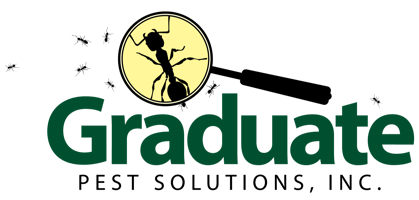What Could it Bee?

Stinging insects such as bees, wasps, hornets and yellow jackets are common across Western Massachusetts and Northern Connecticut, especially during the late summer and early fall. These painful stings can be more than just a nuisance– the NPMA reports that stinging insects send over half a million people to the hospital every year. Ouch!
But how can you tell which insects are harmful? Identification is key to determining risk, so check out our guide below on how to tell some of these stinging insects apart. All information courtesy the National Pest Management Association.
Bees
Bumble Bees
Description: Between ¼ to 1 inch in size, black and yellow markings, an overall fuzzy appearance.
Nest: Built out of pollen clumps, usually in the ground or a dense grass clump.
Threat: Considered beneficial because they pollinate flowers, but they can sting if disturbed. If nest is located on or near a structure, then control is necessary.
Carpenter Bees
Description: Between ½ to 1 inch in size. They resemble bumble bees, but the top half of their abdomen is bare and shiny.
Nest: Do not live in nests or colonies. Instead they bore into wood and create ‘galleries’ for rearing their offspring.
Threat: Pose a serious threat to property, and can cause severe structural damage over time. The males have no stinger, and the females have a stinger which is rarely used.
Honey Bees
Description: Between ½ and ⅝ of an inch in size, they are golden yellow with dark bands.
Nest: Social insects and live as colonies as hives, with up to 80,000 members in one hive.
Threat: Non-aggressive, honey bees only sting when threatened. They pollinate over 100 species of crops in the U.S. and are considered beneficial.
Wasps
Unlike bees, which generally can only sting you once, wasps and hornets can sting you multiple times.
Bald-faced Hornets
Description: ½ to ⅝ of an inch long, mostly black with a white pattern on the face.
Nest: Build aerial nests out of paper carton, usually in exposed locations such as trees or overhangs.
Threat: Considered beneficial because they control many other pest species. However, control is necessary if the nest is located near a structure.
European Hornets
Description: large in size, between ¾ and more than 1 inch. Brown with yellow abdominal markings and a pale face.
Nest: Build paper carton nests, usually with a brown ‘envelope’ as protection. Typically found in hollow trees, barns, attics and hollow walls.
Threat: Considered beneficial because they control many other pest species. However, control is necessary if the nest is located near a structure.
Paper Wasps
Description: ⅝ to ¾ of an inch long, typically brown with yellow or reddish markings.
Nest: Construct nests out of paper-like material, often in an umbrella shape and hanging from branches, railings, door frames or rafters.
Threat: Typically not aggressive, but there is a high probability you will be stung if you touch a paper wasp nest. Control is necessary if the nest is located near a structure.
Yellow Jackets
Description: Between ⅜ and ⅝ of an inch with a black and yellow striped color pattern.
Nest: Live in nests constructed of paper carton, which can grow to be the size of a basketball. Nests can be found on spots near the ground, such as roots or logs, or in aerial locations such as shrubs, trees or houses.
Threat: Slow to sting unless their nests are threatened. Considered beneficial because they control many other pest species. However, control is necessary if the nest is located near a structure.
It’s not usually advisable to control an infestation of stinging insects on your own, as your chance of getting stung can be high. If you have a bee or wasp issue and want to call in the pros, Graduate Pest Solutions will come help you out.
YOU MAY ALSO LIKE
These related articles

